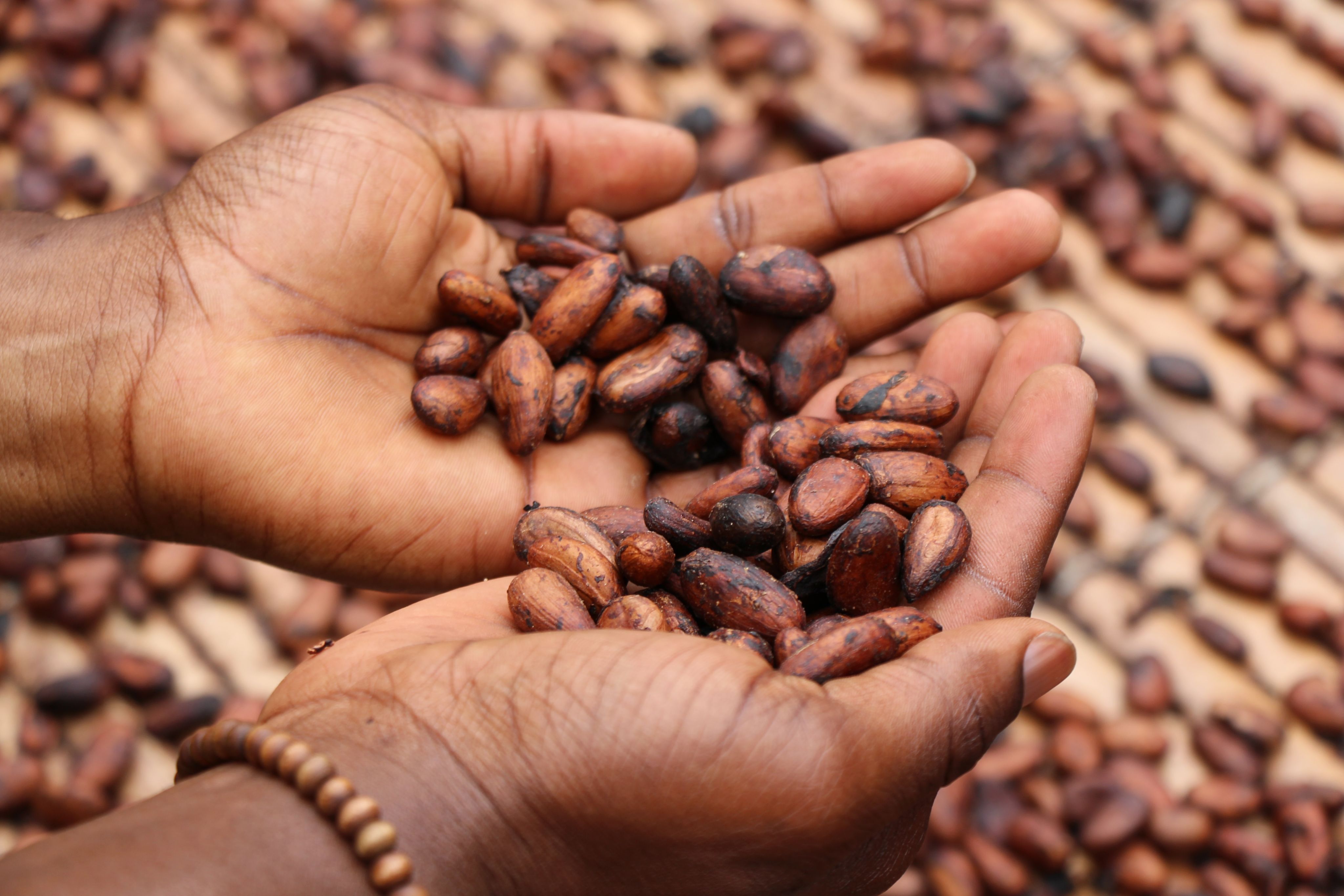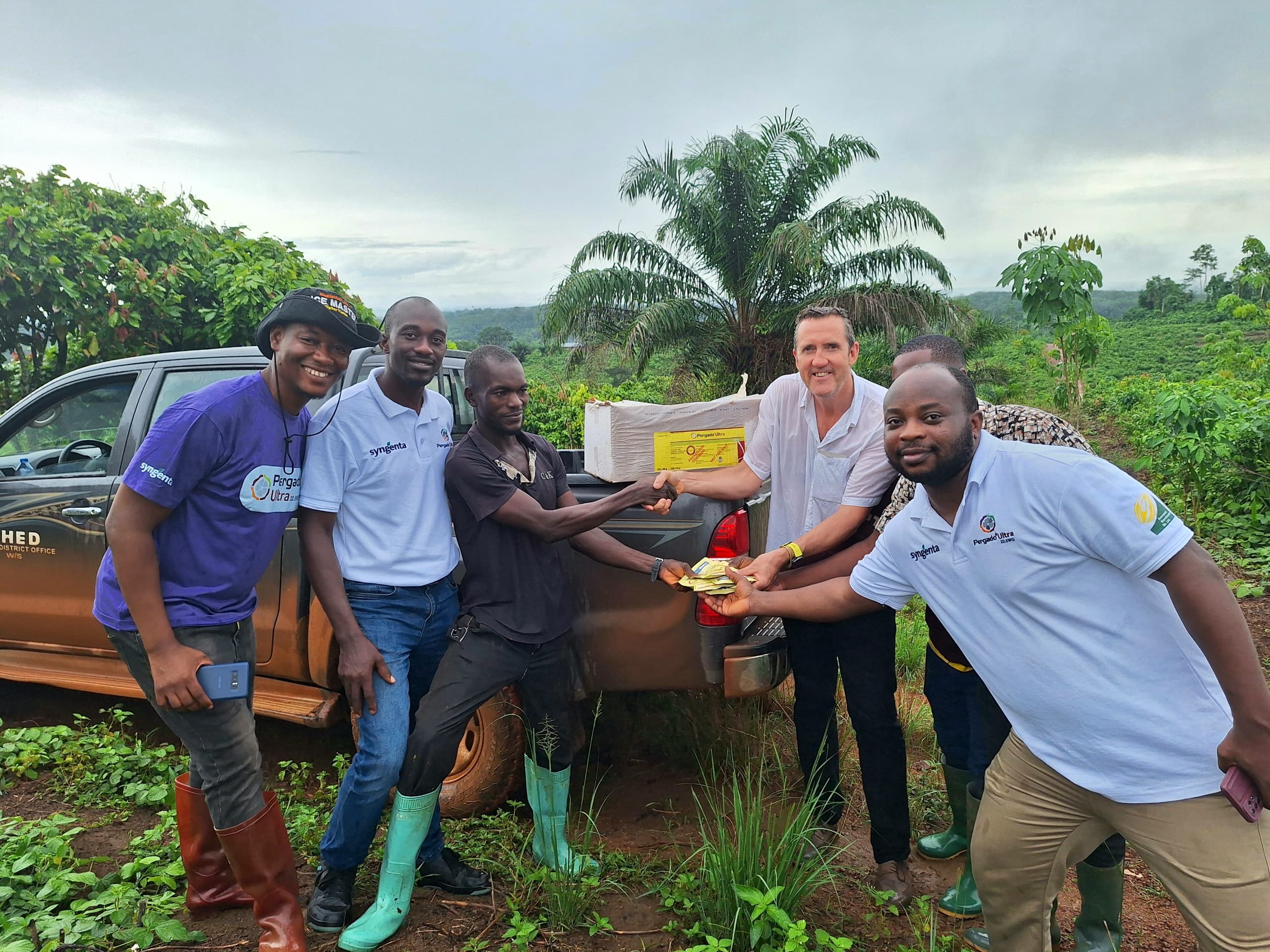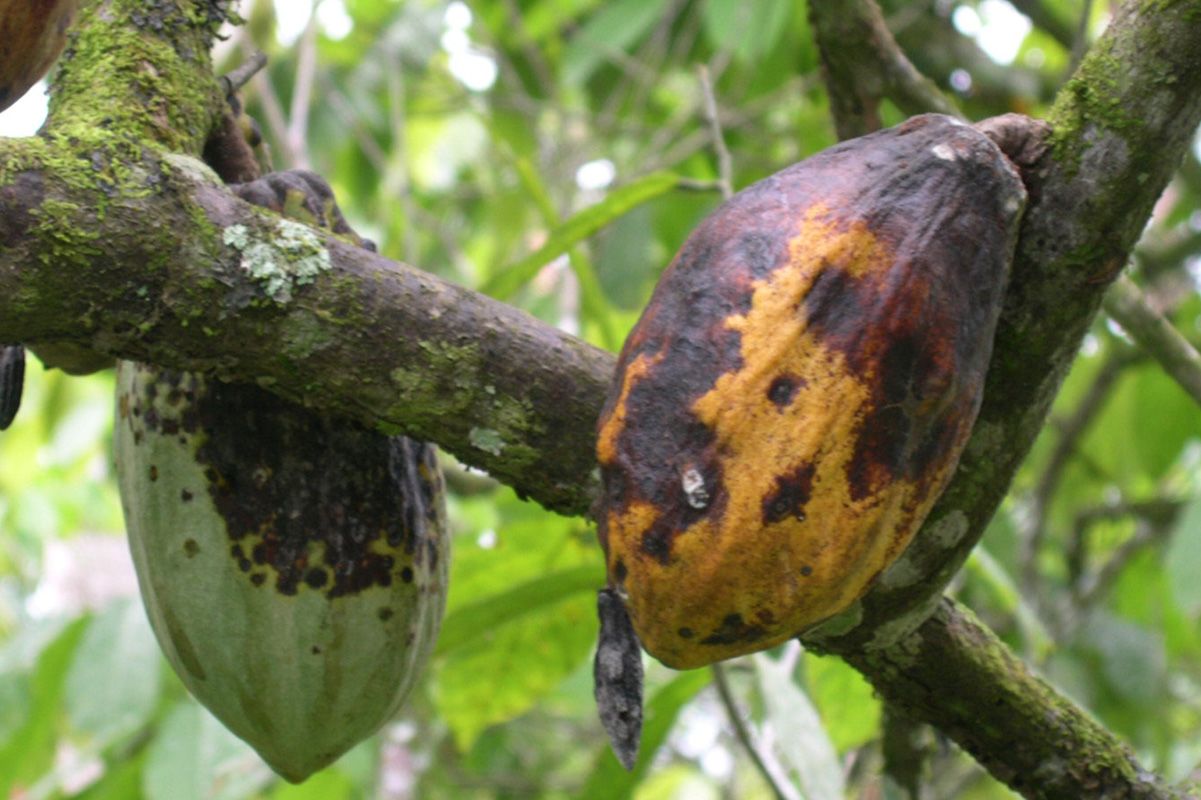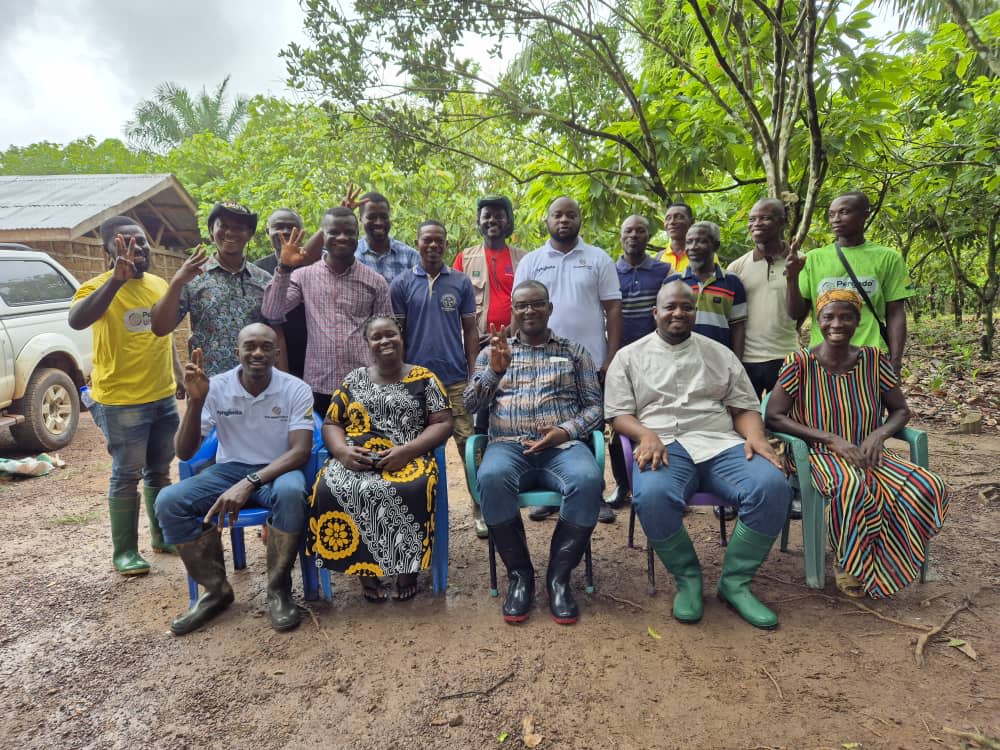Serious disease and pest pressures causing cocoa shortage
Why the world’s favorite treat depends on innovation in crop protection

Feeling the pressure
For the last 16 years Andrea Parsons has run ‘I Should Coco', an independent chocolate shop serving the community of the small, coastal town of St. Ives in the southwest of the UK. However, despite the community's support, the shop is facing hard times.
The shop has dealt with everything from supply problems to high energy and business costs, to the impact of the COVID-19 pandemic. However, the biggest issue in Andrea’s opinion is the price of cocoa. The cost of the critical ingredient has doubled in the past six months, and Andrea says the future looks bleak - “we are facing closure.” As Andrea points out, this is not a unique situation, but something that “will be true for many small independent shops and chocolatiers.”
Small businesses like Andrea’s are among the first to feel the impact of global volatility in the cocoa market. As recently as June 2024 the price of cocoa hit $10,000 a ton in the commodities market, a huge price jump from the previous year when it was trading at under $3,000 a ton.
These unprecedented price increases are coupled with shrinking supply – the International Cocoa Organization is predicting a global shortfall of almost 11% in the 2023/24 season. Making matters even worse, recent reporting shows Cote D’Ivoire - a major producer - halting exports of cocoa beans for the month of June. Statistics show that for the last three years global harvests have dropped, leading to price rises. As these price rises are felt by consumers, the future of chocolate looks increasingly uncertain.
A complex combination of factors has left retailers and consumers cutting their spending, with growers in desperate need of new options to help safeguard their crops from disease, pests and unstable weather.

Feeling the pressure
For the last 16 years Andrea Parsons has run ‘I Should Coco', an independent chocolate shop serving the community of the small, coastal town of St. Ives in the southwest of the UK. However, despite the community's support, the shop is facing hard times.
The shop has dealt with everything from supply problems to high energy and business costs, to the impact of the COVID-19 pandemic. However, the biggest issue in Andrea’s opinion is the price of cocoa. The cost of the critical ingredient has doubled in the past six months, and Andrea says the future looks bleak - “we are facing closure.” As Andrea points out, this is not a unique situation, but something that “will be true for many small independent shops and chocolatiers.”
Small businesses like Andrea’s are among the first to feel the impact of global volatility in the cocoa market. As recently as June 2024 the price of cocoa hit $10,000 a ton in the commodities market, a huge price jump from the previous year when it was trading at under $3,000 a ton.
These unprecedented price increases are coupled with shrinking supply – the International Cocoa Organization is predicting a global shortfall of almost 11% in the 2023/24 season. Making matters even worse, recent reporting shows Cote D’Ivoire - a major producer - halting exports of cocoa beans for the month of June. Statistics show that for the last three years global harvests have dropped, leading to price rises. As these price rises are felt by consumers, the future of chocolate looks increasingly uncertain.
A complex combination of factors has left retailers and consumers cutting their spending, with growers in desperate need of new options to help safeguard their crops from disease, pests and unstable weather.
Andrea Parsons; Owner, I Should Coco.
Andrea Parsons; Owner, I Should Coco.
Two African countries
Over 60% of global production
Much of the world’s cocoa supply is grown in West Africa, with the majority coming from just two countries.
Côte d’Ivoire produces around 40% of the world’s supply, with Ghana producing another 20%. Cameroon is also another major producer, meaning that challenges in the region have serious worldwide impacts.
The last year has seen increasing weather problems, but there are also serious diseases pressures threatening millions of the region's cocoa trees. Jules Talom, Syngenta’s Key Account Manager for Cameroon, explains there are three main problems facing farmers. “Firstly, a virulent sucking pest – cocoa mirids – that drains the sap from the pods of cocoa trees. Then there is also black pod disease, caused by a fungus, leaving farmers in need of new crop protection options.”
Cocoa pods infested with Black Pod Disease. Photo credit: International Institute of Tropical Agriculture
Cocoa pods infested with Black Pod Disease. Photo credit: International Institute of Tropical Agriculture
Worse still has been a pandemic of Cacao Swollen Shoot Virus Disease (CSSVD). This disease causes plant roots and pods to shrink and whither eventually killing off the infected trees. The impact of the disease is substantial too, with research showing it can reduce harvests by as much as 25-50%.
Despite the massive spike in prices for cocoa, the impact of these diseases in combination with unfavorable weather patterns has been so serious that the value of Ghana’s cocoa exports has fallen by 50%. Even when the weather has been good, disease has massively decreased harvests, resulting in what the Tropical Research Service has called the lowest yields for the last 10 years.
When CSSVD infection is spotted there is little at present that can be done to prevent its spread. The West African tropical climate is perfect for growing cocoa but also provides ideal conditions for the mealybugs that act as a vector for CSSVD and spread the disease through the tree canopy. These bugs can often be resistant to traditional pesticides and so the most popular method of disease control is cutting down, removing and burning infected trees.
Mealybug infestation on a plant
Mealybug infestation on a plant
According to data compiled since 2018 by Ghana’s national cocoa board, Cocobod, the country has 1.27 million hectares of cocoa plantations. Of that, about 587,000 hectares have been infected with the swollen shoot virus. This has had a devastating impact on yields and is likely to have serious knock-on consequences for global supply.
In Ghana, the standard practice is to sell cocoa crops a year ahead – a move that is designed to give growers some financial stability for their harvests. However, as Reuters reported recently, Ghana’s cocoa board is delaying the delivery of more than 300,000 tons from this season to next season, suggesting that these challenging conditions could well persist into the future.
Innovation providing new options for growers


Agricultural innovation offers ways for farmers to mitigate the evolving challenges they face. When disease pressures increase it is only through new protection technology that farmers can boost their productivity. Though there is currently no treatment or protection option available for CSSVD, Syngenta is collaborating with the Cocoa Research Institute of Ghana to find new ways of controlling the cocoa mealybugs.
Torrential rains across the West and Central African sub-region have also exacerbated the impact of black pod disease further reducing yields. Harnessing decades of continuous research and technological expertise, Syngenta has recently introduced PERGADO® Ultra, a fungicide designed to control black-pod disease and give growers a new option for crop protection.
PERGADO® Ultra and PERGADO® Cocoa are designed specifically for the weather and environment of the region. The unique technology means that on application it isn't easily washed off by heavy rain. This new product – sorely needed by growers to help boost productivity and safeguard harvests – comes more than two decades after Syngenta first introduced fungicides to the Ghanaian and West African cocoa industry.
The development of new, environmentally sustainable and effective protection products is a complex and often extremely lengthy process, but Syngenta’s involvement in West Africa’s cocoa goes beyond providing farmers with new tools.
As Issakha Camara, Head of West and Central Africa explains, Syngenta is also working on the ground to help ensure that cocoa farming is financially and ecologically sustainable for the long-term.
In Ghana, the company is working closely with Cocobod. Syngenta’s focus is on providing training and support in three key intervention areas – pruning, pollination, and pod protection. This ensures farmers have access to best practice advice that will raise productivity, the latest products to help safeguard yields, and detailed information about the best time and conditions to apply those products. To ensure transparency, Cocobod will independently assess the efficacy of Syngenta’s work within two growing seasons.
In Cameroon, after the successful launch of PERGADO® Cocoa, Syngenta is also running two important pilot schemes. The first is a revenue diversification pilot, designed to help female growers improve the financial sustainability of their businesses. The second of these pilots is concerned with disease forecasting and tracking weather conditions to give growers the information they need to apply these essential crop protection products at precisely the right time. While the global volatility in cocoa is complex, driven by multiple large-scale factors, growers need ways of ensuring their crops are protected, healthy and ultimately, profitable.
Kingsley Adade, Technical Field Expert - West Africa
Kingsley Adade, Technical Field Expert - West Africa
Kingsley Adade, Technical Field Expert - West Africa
Kingsley Adade, Technical Field Expert - West Africa
While the global volatility in cocoa is complex, driven by multiple large-scale factors, growers need ways of ensuring their crops are protected, healthy and ultimately, profitable.
Kingsley Adade, one of Syngenta’s technical field experts and Key Account Manager for Ghana, says it is important Syngenta offers farmers new and more productive ways of working. “Rather than have farmers cut down their trees and move towards a different cash crop like rubber,” the company is working to show farmers that high productivity and financial stability for cocoa is still possible.
Through business support, new knowledge and encouraging the use of the latest agricultural innovations, Syngenta aims to get farmers to “commit to cocoa for the long-term. If farmers see the results of these trials, they will see revenue growth.”
Fixing the challenges facing the world of chocolate is not something that will happen overnight. With disease vectors, pest threats, and the ever-increasing pressure of climate change, both small retailers and farmers could well be facing an uncertain future.
So, to help ensure that the planet’s most popular sweet treat survives, more innovative technologies that protect crops and boost productivity are essential tools.
Images from the PERGADO® Ultra launch event in Ghana, Africa
Images from the PERGADO® Ultra launch event in Ghana, Africa
Images from the PERGADO® Ultra launch event in Ghana, Africa
Images from the PERGADO® Ultra launch event in Ghana, Africa
Images from the PERGADO® Ultra launch event in Ghana, Africa
Images from the PERGADO® Ultra launch event in Ghana, Africa








